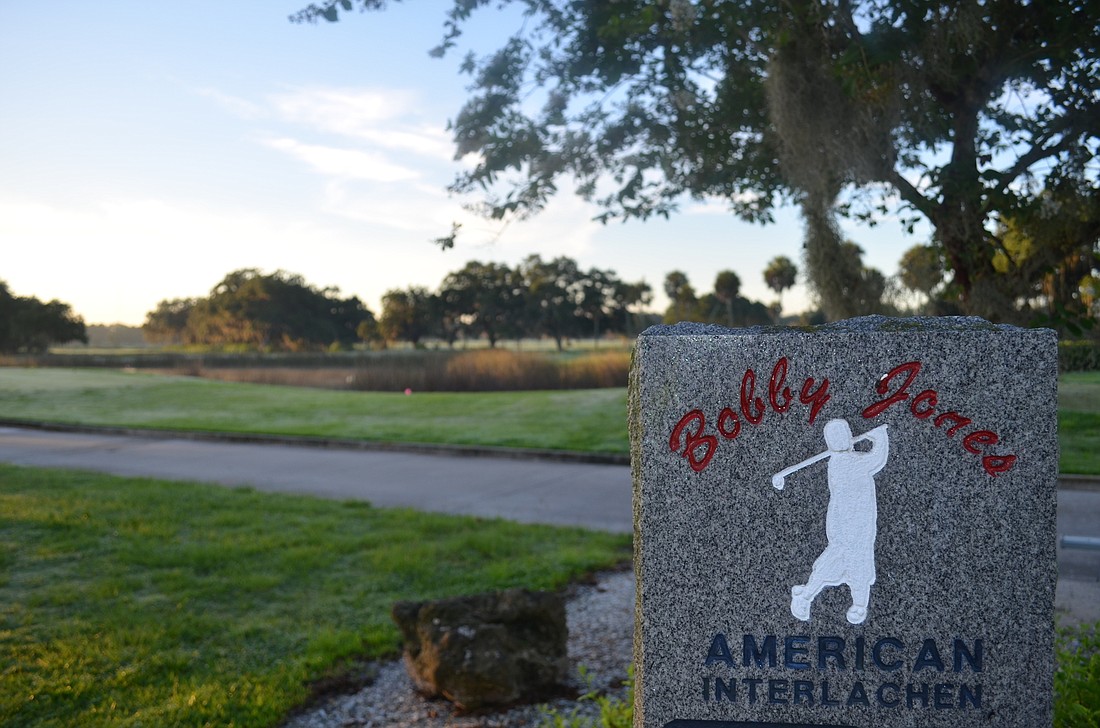- April 18, 2024
-
-
Loading

Loading

If the City Commission approves staff’s proposed budget for fiscal year 2017-18, taxpayers will fund a $425,000 subsidy to Bobby Jones Golf Club — a facility whose reserves have run dry for the first time officials can recall.
The deterioration of Bobby Jones is an oft-discussed subject at City Hall. City staff say the 45-hole municipal facility, located on the east end of town, is suffering because its infrastructure dates back to the 1980s. The irrigation is bad. The drainage is bad.
As a result, the course tends to be in rough shape, too. The city replaced the greens on both 18-hole courses at Bobby Jones, and General Manager Sue Martin said that $500,000 investment has more than paid off. But golfers still grouse about the conditions of the fairways, and the estimated income from greens fees declined by about $20,000 over last year.
City staff isn’t denying there are problems with the way the course has operated during the past decade. As they asked for that $425,000 subsidy from the city’s general fund at a budget workshop in June, they made clear that Bobby Jones will continue to struggle if nothing changes.
“Over the last 10 years, the golf course has been in decline, and the capital influx hasn’t been there to compete with the golf courses in the area,” Martin said.
That capital influx, officials hope, is the key to turning around the fortunes of Bobby Jones. On Thursday, golf architect Richard Mandell will unveil his complete master plan for improving the facility at a Parks, Recreation and Environmental Protection Board meeting.
The city hired Mandell in January, paying $115,000 to get advice on how the golf club could be brought up to par. That contract came after a citizen study committee spent nearly a year assessing the needs of Bobby Jones and said the city should invest $14.5 million to improve the facility.
Mandell isn’t making his plans public before Thursday’s meeting because he wants to incorporate input from the advisory board before sharing it with a broader audience. During seven walkthroughs with golfers during his planning process, he’s gotten positive feedback to his vision for Bobby Jones, which is built around maintaining the existing character of the courses while improving the quality.
One thing that won’t be included in Mandell’s plans? A model for how to make Bobby Jones a financially stable business in the wake of any improvements.
Mandell said his expertise is in the physical conditions of the course, and the scope of his contract with the city doesn’t include the operations of the facility.
So, if Bobby Jones gets the “capital influx” staff says it needs, how sure can the city be that the club will stop losing money? Martin said it’s hard to understate the impact of the aging infrastructure the courses use. A rainy day could cost facility two or three days of revenue because the courses are so slow to drain.
“It doesn’t help that there’s a lot of attention being given to the decline of the facility,” Martin said. “There could be golfers out there saying, ‘Let’s wait for them to improve it before we go.’”
Martin said staff has begun discussing the need to have a formal business plan in place to go along with any improvements, but she described that as the next step in the planning process.
“We can’t get a business plan until we know where we’re going with the master plan,” she said.
Although Mandell didn’t want to get into the specifics of managing the course financially, he shares Martin’s optimism about the club’s ability to succeed following the right improvements. He dismissed a narrative that calls golf a declining sport.
What has happened, he said, is a burst bubble. The number of golf courses expanded beginning in the 1980s, mostly private courses that anchored residential developments. The number of casual golfers increased around that time, and has drawn down since.
Mandell said that has created a real problem for the golf business. Those private courses, struggling to stay afloat, are opening up to the public — and offering rates competitive with municipal facilities.
“That all of a sudden does become competition for Bobby Jones, but Bobby Jones has a lot more going for it than these courses,” Mandell said.
“People are finding Bobby Jones. What they’re finding is a golf course that’s in decline.” — Richard Mandell
The history of the course in the community is a legitimate asset, Mandell said. So are the names associated with it: golfer Bobby Jones and architect Donald Ross, both influential figures in the early history of the sport in America. Both residents and visitors want to golf at Bobby Jones — just not in the current conditions.
“People are finding Bobby Jones,” Mandell said. “What they’re finding is a golf course that’s in decline.”
Nearly six months after Mandell began his master planning work, many questions remain unanswered. How much will the improvements cost? How long will it take to overhaul the facility? And what, exactly, does a thriving Bobby Jones Golf Club look like from an operations standpoint?
Despite those questions, officials have not shown any signs of wavering in their belief that Bobby Jones is an asset for the city. And Mandell is confident that a high-quality municipal golf facility can succeed in Sarasota.
“If the country hears that Bobby Jones has been completely renovated and rebuilt, they’re going to flock,” Mandell said.